Gardening brings joy and satisfaction, but it also comes with challenges like pests and diseases that can plague your plants. While these issues may not be fatal, early detection is key to preventing significant damage. In this article, we’ll explore common garden pests and diseases, helping you identify and address them effectively for a thriving garden.

Aphids
Aphids, tiny insects that infest plants like scabiosa, can be controlled with water jets or insecticidal soap. Regular sprayings are often needed to fully eliminate them. These pests weaken plants by sucking sap from leaves, causing wilting and yellowing. Prompt action is key to preventing widespread damage.
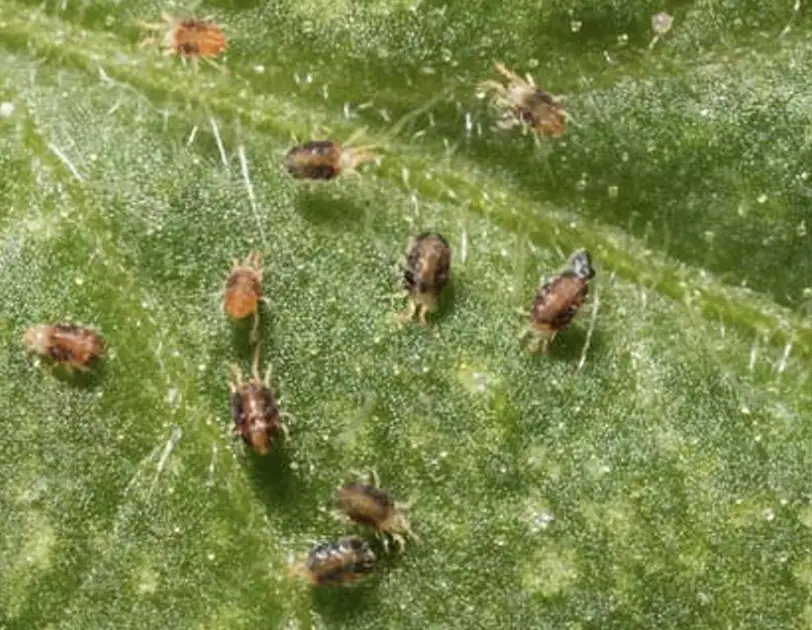
Spider Mites
Spider mites, like those that attacked this boxwood, can devastate plants by sucking sap from leaves, causing them to dry out and die. Combat them by spraying with horticultural soap, which helps control their population. Regular treatments may be necessary to fully eradicate these pests and save your plants from further damage. Keep a close eye on affected areas and act swiftly to prevent severe infestations.
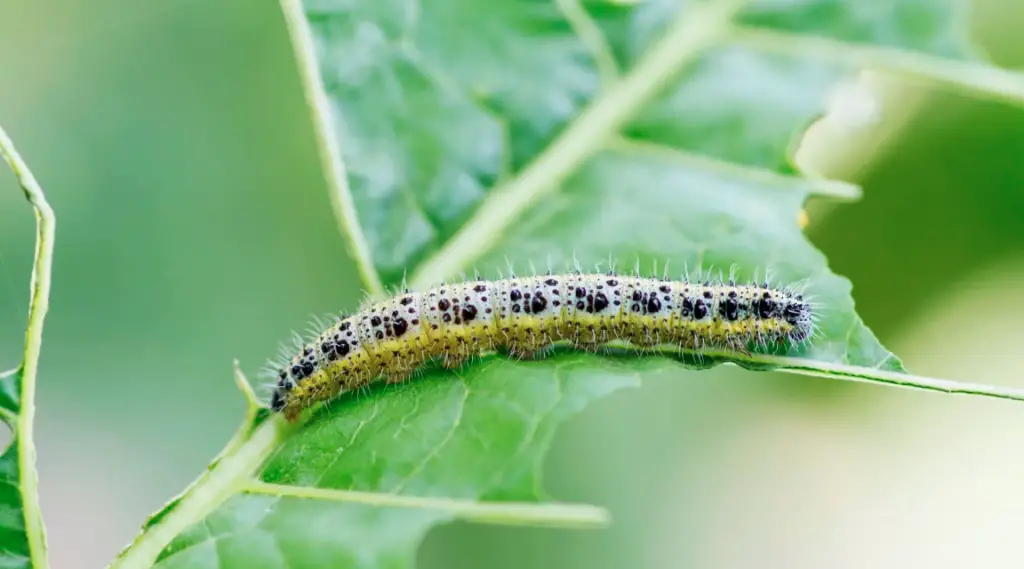
Cabbage Worms
Cabbage worms leave distinctive holes in cabbage leaves. To control them, manually remove adult worms and inspect the undersides of leaves for eggs. Alternatively, introduce natural predators like parasitic wasps or apply biological pesticides containing Bacillus thuringiensis (Bt) to target these pests effectively. Regular monitoring and prompt action can help mitigate the damage caused by cabbage worms and protect your cabbage crop from extensive feeding damage.
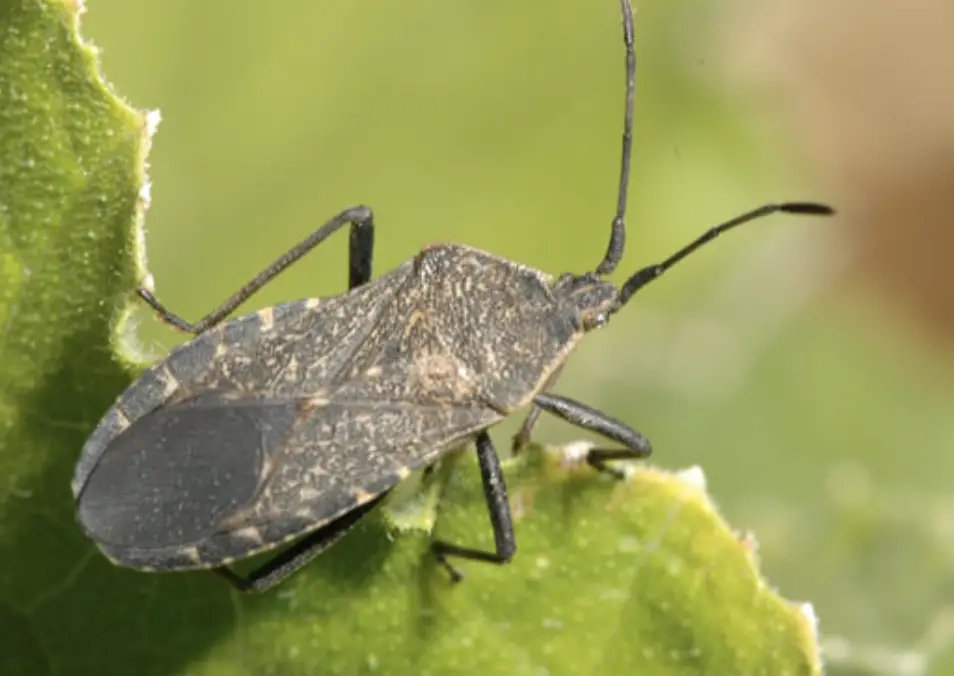
Squash Bugs
Squash bugs are emerging from their eggs, noticeable on the leaf undersides. Immediate action involves removing infested leaves and vigilantly searching for adult bugs. Implementing barriers like row covers during early plant growth stages can deter egg-laying. Handpicking adults and disposing of them in soapy water is an effective organic control method. Consistent monitoring throughout the growing season aids in early detection and management, safeguarding squash plants from the damaging effects of these pests.
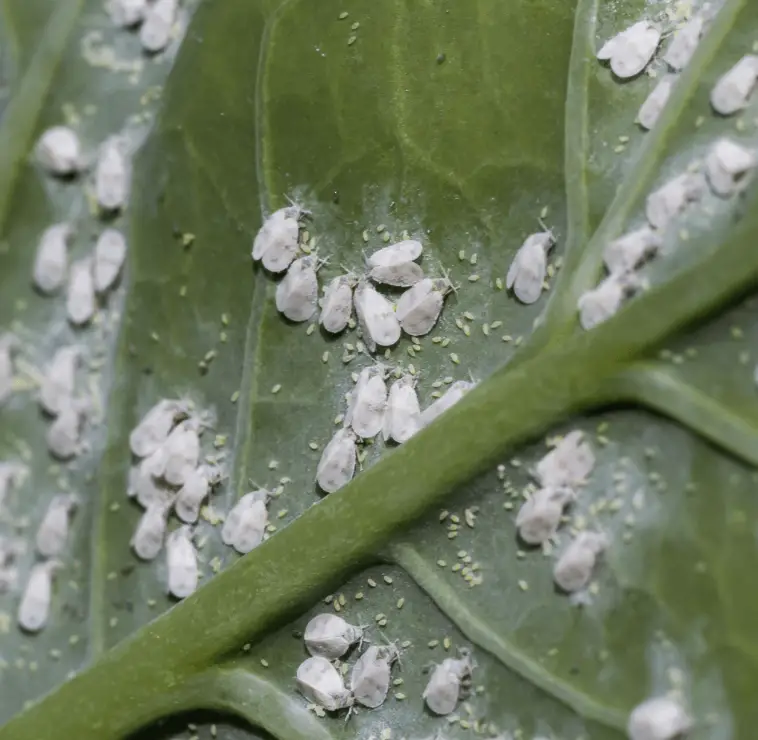
Whiteflies
Whiteflies, akin to aphids and scale, can quickly multiply, causing wilting and stunting in plants. Regular monitoring and a multifaceted approach are key to managing their population. Inspect new plants for infestations, and if found, wash them off with water or treat with pyrethrum or neem sprays. Ensure thorough coverage of both leaf surfaces, repeating applications as needed to curb their numbers and protect plant health. Swift action and vigilance are essential to prevent the detrimental effects of whiteflies on garden plants.
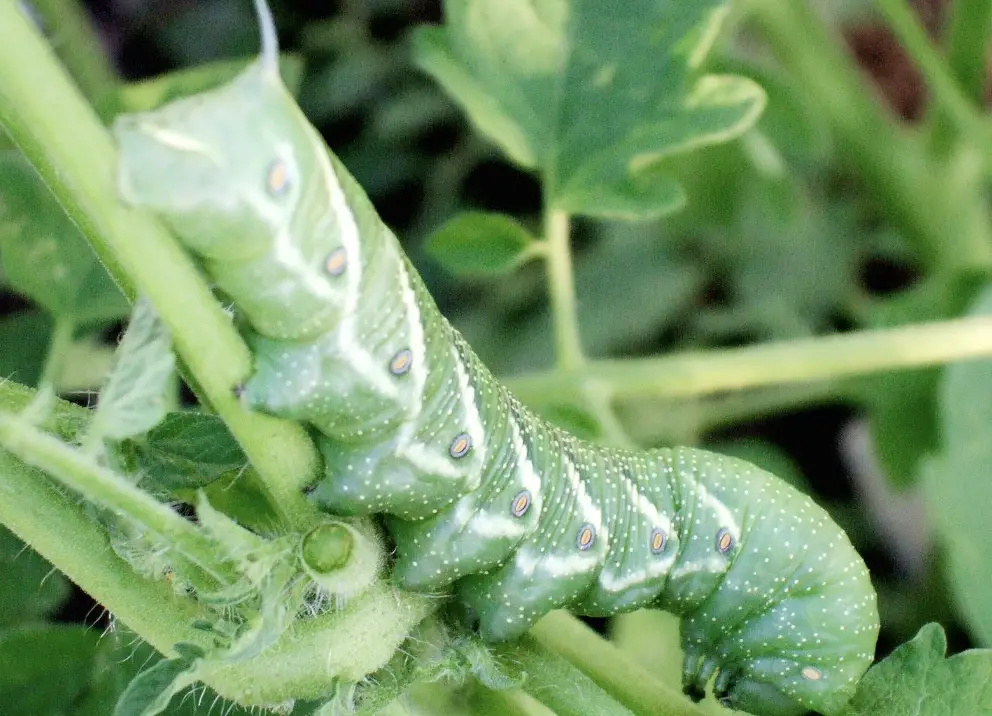
Tomato Hornworms
The tomato hornworm, with its large size and voracious appetite, is a formidable foe for tomato and pepper plants. Often blending in seamlessly with foliage, these pests can cause significant damage before detection. Swift removal by hand is the most effective control method. While their size may be intimidating, diligent monitoring and prompt action can prevent widespread damage in the vegetable garden. Keep an eye out for these camouflaged invaders and dispose of them to safeguard your plants from their ravages.
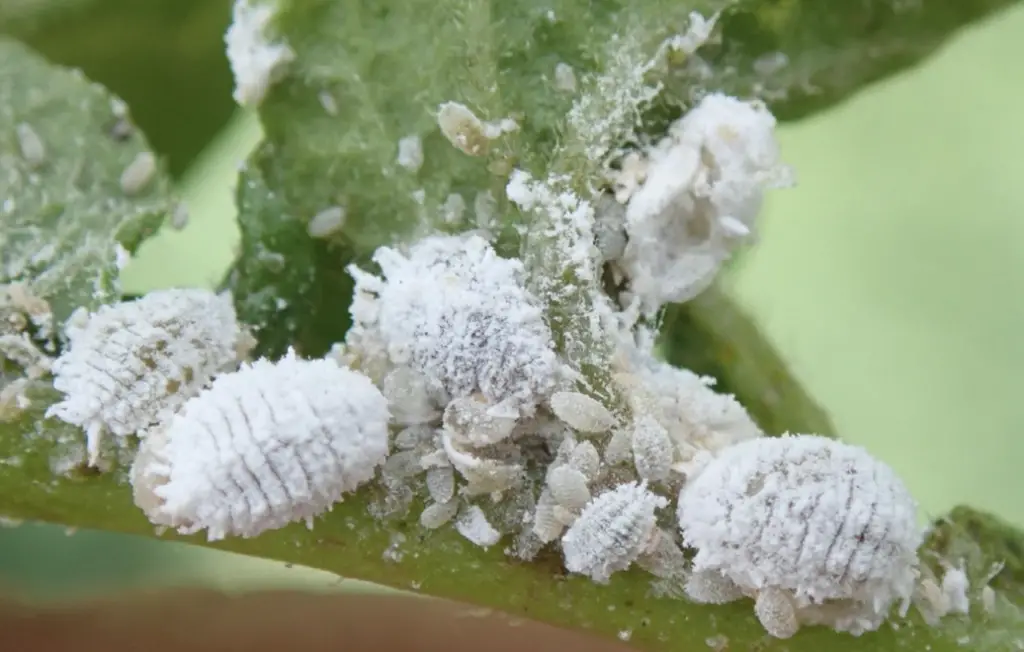
Mealybugs
Mealybugs are notorious for their resilience and ability to quickly infest plants, making them a challenging pest to control. Their slow but steady movement enables them to spread easily, hitchhiking on new leaves and hiding in unexpected places like plant crevices. With their waxy coating providing some protection, they reproduce rapidly, laying hundreds of eggs in cottony masses. Controlling their population requires a multifaceted approach, including the introduction of natural predators like green lacewings and mealybug destroyers, along with spot treatments using alcohol-soaked q-tips. This combination strategy effectively targets mealybugs and safeguards plant health.
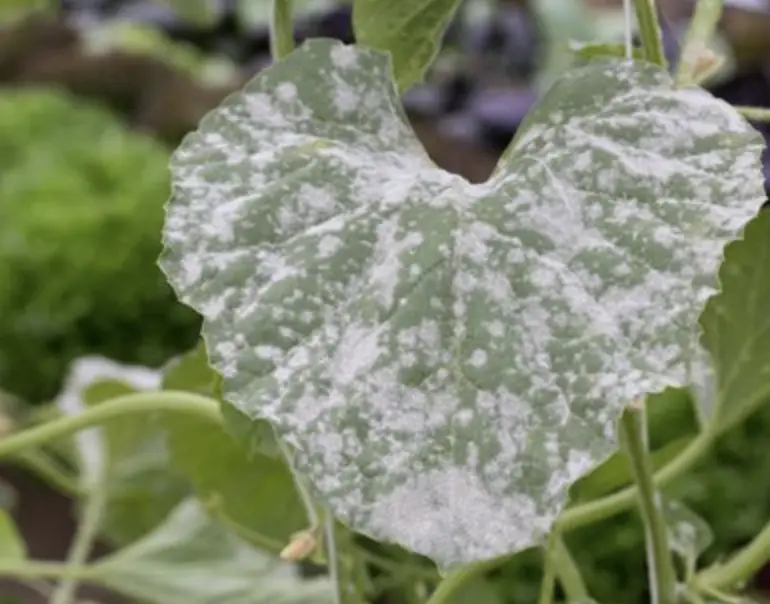
Powdery Mildew
Powdery mildew is a fungal disease that affects a wide range of plants, manifesting as a white or gray powdery coating on leaves, stems, and sometimes flowers. It thrives in warm, humid conditions but can also occur in dry environments. Common signs include distorted or stunted growth, yellowing or browning of leaves, and premature leaf drop. As the disease progresses, affected plant parts may become covered entirely with the powdery substance. While not usually fatal, powdery mildew can weaken plants and reduce their vigor, making it important to address promptly to prevent further spread and damage.
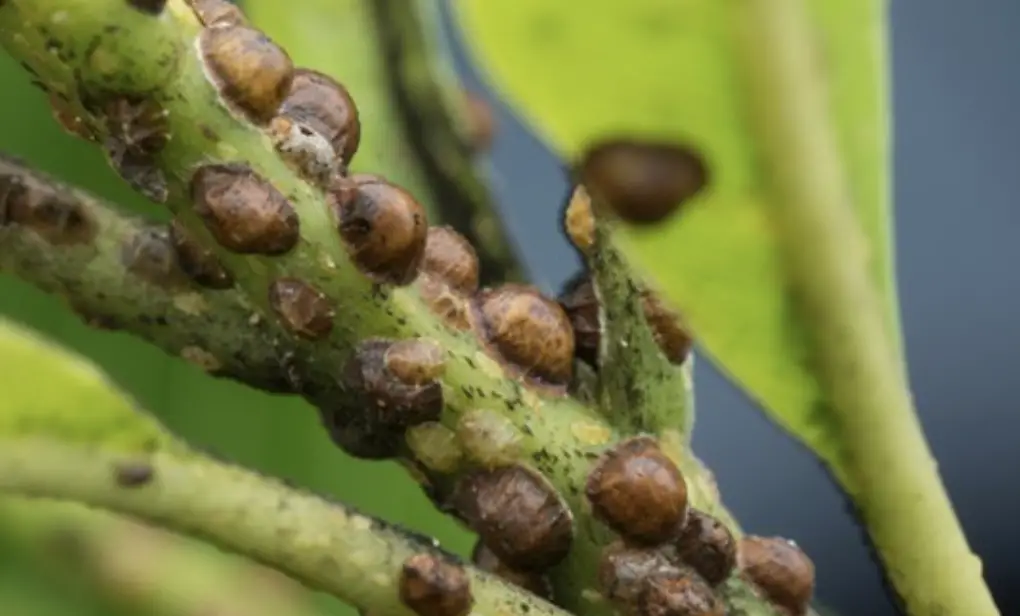
Common Brown Scale
Common brown scale, scientifically known as Coccus hesperidum L., is a prevalent pest found on various plants. These ovate insects, measuring about 3-4 mm long, have a brownish appearance, often forming clumps along stems. They feed on plant juices using their spiky mouthparts, typically staying immobile once settled. Reproducing both sexually and parthenogenetically, they can rapidly increase in numbers. While homemade soap sprays may not effectively control them due to their protective covering, targeted treatment to reach under their shield-like exterior is crucial. Controlling scale infestations, especially indoors, is essential to prevent their continuous reproduction and damage to plants.
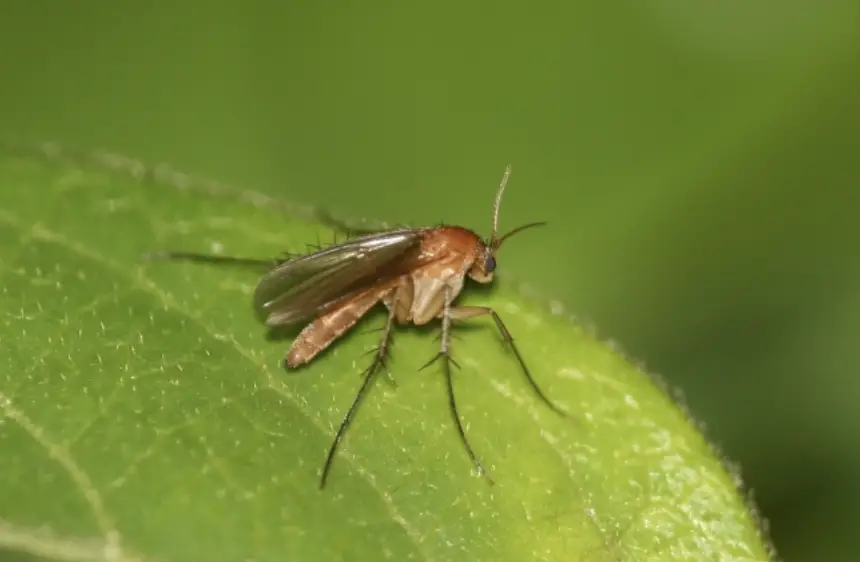
Fungus Gnats
Fungus gnats, resembling fruit flies, are more of a nuisance than a threat to plants. They lay eggs in moist compost, and their larvae feed on fungi. While they can damage plants, they’re easily managed with BTI bacteria in the soil and yellow sticky traps. Additionally, you can introduce natural predators like Stratiolaelaps scimitus mites for extra control. I once faced a fungus gnat infestation while growing microgreens in compost. Using BTI and sticky traps, the issue was resolved within three days. These methods are effective and safe for both your plants and the environment.
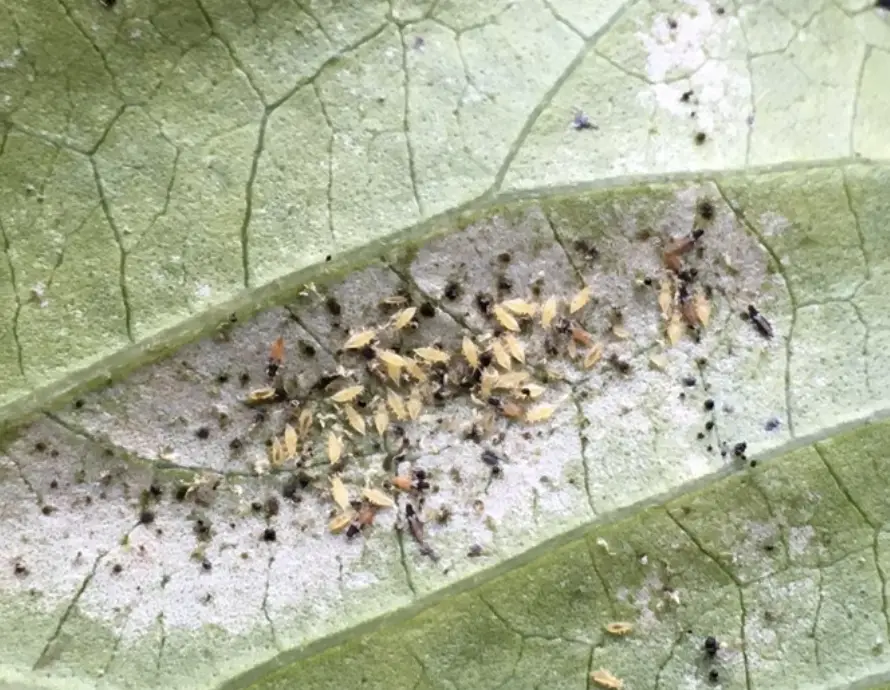
Thrips
Thrips, although less common, can wreak havoc on household plants. These pests are often introduced through herbs or other plants and quickly spread. Thrips puncture plant surfaces, causing silver discoloration and leaving behind black frass. My prized African blue basil was nearly decimated by thrips until I introduced natural predators like Thrips Predators and Minute Pirate Bugs. Blue sticky traps can also help control adult thrips, as they are attracted to the color blue. Vigilance and proactive measures are essential to combat thrip infestations and protect your plants from damage.
Best Prevention Methods
To prevent pest infestations in your home garden, adopt these proactive measures. Before purchasing a plant, thoroughly inspect it for any signs of insects, and alert the seller if you find any. Ensure your pots and potting soil are clean and free from disease-carrying agents by washing them with a diluted soap or bleach solution. Remove any potential pests from the soil ball of the plant before repotting.
Consider isolating new plants from the rest of your garden for a few days to monitor for pests. Avoid letting leaves of different plants touch, as this can provide a pathway for pests like scale to spread. If you discover pests like millipedes, consider natural methods like diatomaceous earth or nematodes to control their population. Regular inspection and preventive measures will help keep your plants healthy and pest-free.
